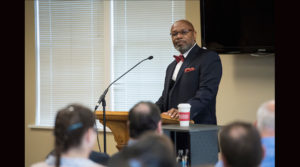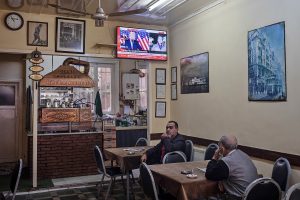EDMONTON, Alberta (AP) — Pope Francis arrived for his first big Mass in Canada on Tuesday to honor grandparents, a day after he apologized for the Catholic Church’s role in severing generations of Indigenous family ties by participating in Canada’s “disastrous” residential school system.
Tens of thousands of people in attendance at Commonwealth Stadium in Edmonton, Alberta, cheered as Francis entered and looped around the field in his popemobile, stopping occasionally to kiss babies. Accompanying him was a steady beat from Indigenous hand drummers.
Phil Fontaine, former chief of the Assembly of First Nations and a residential school survivor, urged the crowd to forgive in remarks delivered before Francis’ arrival: “We will never achieve healing and reconciliation without forgiveness,” he said. “We will never forget, but we must forgive.”
It wasn’t clear if Francis would actually celebrate the Mass himself or designate someone else to lead while he presides sitting from the side of the altar, as he has done in recent months because strained knee ligaments make standing and walking difficult. Either way, Francis was expected to deliver the homily.
The Mass marks the Feast of St. Anne, the grandmother of Jesus and a figure of particular veneration for Canadian Catholics. Francis’ ode to grandparents was to continue later Tuesday with a prayer service at one of North America’s most popular pilgrimage sites, Lac Ste. Anne, considered to be a place of healing.
Francis has long lauded the role of grandmothers in passing the faith on to younger generations, citing his own experience with his grandmother, Rosa, while growing up in Buenos Aires, Argentina. For several months Francis has delivered weekly catechism lessons on the need to treasure grandparental wisdom and not discard them as part of today’s “culture of waste.”
That message has great resonance in Canada, where Indigenous families were torn apart by a church-enforced government policy of forcible assimilation.
More than 150,000 Native children in Canada were taken from their homes and forced to attend government-funded Christian schools from the 19th century until the 1970s in an effort to isolate them from the influence of their families and culture. The aim was to Christianize and assimilate them into mainstream society, which previous Canadian governments considered superior.
In his first event in Canada, Francis on Monday blasted the residential school policy as a “disastrous error” that did “catastrophic” harm. At the site of a former school in Maskwacis, he apologized for the “evil committed by so many Christians against the Indigenous peoples” and vowed further investigation and steps to promote healing.
Reaction to his visit and words was mixed: Some survivors stayed away and criticized Indigenous leaders’ decision to present Francis with a feathered headdress, which is a sign of respect. Others welcomed his apology as genuine and praised the attention his visit has drawn to the horrors of the residential school system.
Indigenous leaders urged him to make good on his pledge to continue the path of reconciliation with concrete action: turning over church records about the fate of Indigenous children who died at schools, funding therapeutic healing programs for survivors and facilitating investigations of those responsible for abuses.
Francis “can’t just say sorry and walk away,” said Chief Tony Alexis of the Alexis Nakota Sioux Nation.
Cree Nation Chief Vernon Saddleback said many “survivors and thrivers” in his community were pleased: “Words cannot describe how important today is for the healing journey for a lot of First Nations people.”
Lac St. Anne is a century-old pilgrimage site where the faithful come and wade into the lake. Francis was to preside over a liturgy of the word service there and bless the waters. In the runup to the pope’s visit, Alberta health authorities issued a blue-green algae bloom advisory for the lake, warning visitors to avoid contact with the blooms and refrain from wading where they are visible.
The lake is known as Wakamne, or “God’s Lake,” by the Alexis Nakota Sioux Nation who live nearby and Manito Sahkahiga, or “Spirit Lake,” by the Cree. The name “Lac Ste Anne” was given to it by the Rev. Jean-Baptiste Thibault, the first Catholic priest to establish a mission on the site.
Francis’ has said his six-day visit, which also will take him to Quebec City and northern Iqaluit, Nunavut, is a “penitential pilgrimage” to atone for the Catholic Church’s role in the residential school system. It fulfills a key recommendation of Canada’s Truth and Reconciliation Commission, which sought a papal apology to be delivered on Canadian soil.
___
Associated Press religion coverage receives support through the AP’s collaboration with The Conversation US, with funding from Lilly Endowment Inc. The AP is solely responsible for this content.



